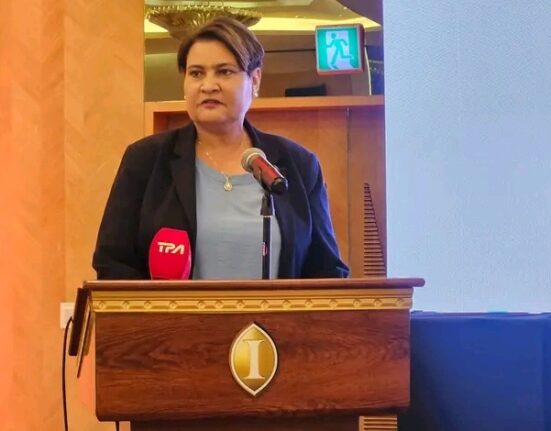Namibia, a vast and diverse country located in southwestern Africa, has experienced significant demographic shifts in recent decades. Among the most notable changes is the rise in urbanization, with more and more people moving from rural areas to cities. This trend is reshaping the country’s social, economic, and infrastructural landscape. As Namibia’s urban population continues to grow, it is crucial to understand the factors driving this shift, the challenges it presents, and the development trends shaping the nation’s cities. This article delves into Namibia’s rising urban population, exploring key trends and offering insights into how urbanization is transforming the country.
The Rise of Urbanization in Namibia
Historically, Namibia has been a predominantly rural society, with a large portion of its population residing in small villages and farming communities. However, over the past few decades, Namibia has witnessed a steady increase in the number of people moving to urban areas. According to the Namibia Statistics Agency (NSA), the proportion of the population living in urban areas has steadily climbed, reaching more than 50% in recent years. This marks a significant shift from a largely rural population to one that is increasingly concentrated in urban centers.
The growth of Namibia’s urban population can be attributed to a variety of factors, both push and pull in nature. The “push” factors include economic challenges in rural areas, such as limited access to employment, education, and healthcare. Many people migrate to cities in search of better opportunities, hoping for improved living standards and access to basic services. On the other hand, “pull” factors such as the availability of jobs, better infrastructure, and enhanced social amenities in urban areas are drawing more people to cities. This trend is particularly visible in major urban centers like Windhoek, Walvis Bay, and Swakopmund, which have seen rapid growth in population and development.
Key Drivers of Urbanization in Namibia
Several key drivers contribute to Namibia’s rising urban population:
- Economic Opportunities: Cities like Windhoek, the capital city, offer greater access to job opportunities, particularly in industries like retail, construction, tourism, and finance. Namibia’s growing private sector, as well as the expansion of foreign investments, have also led to increased demand for labor in urban areas. As rural economies are often limited in scope, urban migration becomes a natural response to the search for better employment prospects.
- Education and Health Services: Urban areas provide better access to quality education and healthcare services. In rural regions, the availability of schools, hospitals, and clinics can be scarce, prompting families to move to cities where they can access improved facilities. This has led to an influx of young people and families seeking better opportunities for their children’s education and their own healthcare needs.
- Infrastructure Development: Namibia’s urban centers have benefited from significant investments in infrastructure, including roads, public transport systems, water supply, and sanitation. These improvements have made urban living more attractive and sustainable, encouraging more people to migrate from rural areas.
- Globalization and Modernization: The rise of digital technologies and the increasing interconnectedness of the world have played a role in encouraging urbanization in Namibia. Access to the internet, mobile phones, and social media has made it easier for rural populations to learn about the opportunities available in urban centers. Additionally, exposure to modern lifestyles and global trends has led many to seek out urban environments where they can experience the conveniences and cultural amenities of city life.
Urban Growth and Development Trends
Namibia’s urbanization is accompanied by several key development trends that are shaping the country’s cities. These trends are not only reflective of the growing urban population but also indicate how urbanization is influencing the country’s economic, social, and environmental future.
1. Expansion of Major Urban Centers
Windhoek, the capital city, has seen rapid population growth in recent years. As Namibia’s economic and administrative hub, Windhoek attracts people from all over the country due to its job opportunities, better living standards, and availability of services. The city is experiencing significant expansion in housing, commercial development, and infrastructure to accommodate the rising population.
Similarly, other towns like Walvis Bay, Swakopmund, and Oshakati are seeing an influx of residents. These cities are becoming more diverse, with a mix of Namibian nationals, expatriates, and foreign workers settling in urban areas. Coastal towns, particularly Walvis Bay and Swakopmund, are benefiting from a booming tourism industry, driving further urbanization in these areas.
2. Informal Settlements and Housing Challenges
One of the most pressing challenges associated with urbanization in Namibia is the rise of informal settlements. As more people flock to cities, the demand for affordable housing has surged. Unfortunately, many urban areas are struggling to keep up with this demand, resulting in the rapid growth of informal settlements, particularly in Windhoek and other urban centers.
These settlements are often characterized by overcrowding, inadequate infrastructure, and limited access to essential services like water, sanitation, and electricity. Informal housing is also vulnerable to environmental factors such as flooding and fire hazards. The government and urban planners are working to address these challenges by providing low-cost housing options and improving infrastructure, but much work remains to be done to ensure sustainable urban growth.
3. Economic Diversification and Job Creation
As urban populations continue to rise, there is an increasing demand for job creation and economic diversification. The traditional sectors of agriculture and mining, which have been dominant in Namibia’s rural economy, are not sufficient to provide employment opportunities for the growing urban population. Therefore, cities are expanding into new industries such as technology, services, and manufacturing.
Government initiatives to promote small and medium-sized enterprises (SMEs) and attract foreign direct investment (FDI) are helping create jobs and foster economic growth in urban areas. Namibia is also seeing the rise of innovation hubs, business parks, and tech start-ups in cities like Windhoek, which are driving economic diversification and offering new employment opportunities to the urban population.
4. Environmental Sustainability and Urban Planning
With the rapid growth of urban populations, sustainability has become a central focus for urban development in Namibia. The government and urban planners are increasingly prioritizing environmental sustainability in the development of new housing, commercial buildings, and infrastructure.
Sustainable urban design includes the promotion of energy-efficient buildings, green spaces, waste management systems, and eco-friendly transportation options. This trend is particularly important in Windhoek, where rapid growth has put pressure on water resources, energy supply, and waste management systems.
Incorporating sustainability into urban planning will be key to ensuring that Namibia’s cities can handle the challenges of a growing population without compromising the environment or quality of life.
Challenges of Rising Urbanization
While urbanization brings many benefits, it also presents significant challenges for Namibia. These include:
- Strain on Infrastructure: As cities grow, the demand for essential services such as water, electricity, and waste disposal increases. The government must invest heavily in expanding infrastructure to meet these growing needs, which can place a financial strain on the economy.
- Unemployment: As the urban population increases, so does competition for jobs. Despite the rise of new industries, many urban residents still struggle to find employment, leading to rising levels of poverty, particularly in informal settlements.
- Social Inequality: Urbanization often exacerbates social inequalities, with wealthier individuals benefiting from improved living conditions and opportunities while poorer individuals face overcrowding, poor housing, and limited access to services.
The Future of Urbanization in Namibia
The future of urbanization in Namibia will depend on how well the government, businesses, and urban planners can address the challenges of growth while capitalizing on the benefits of a more urbanized population. With continued investments in infrastructure, job creation, and environmental sustainability, Namibia’s cities can thrive as centers of innovation, economic activity, and cultural exchange.
In conclusion, Namibia’s rising urban population is reshaping the country’s development landscape. With a combination of economic opportunities, infrastructure development, and cultural adaptation, urbanization is driving Namibia towards a more urbanized future. While challenges remain, particularly in terms of housing, job creation, and inequality, Namibia’s cities are poised to play an increasingly important role in the nation’s economic and social progress in the coming decades.
Join 'Namibia Today' WhatsApp Channel
Get the breaking news in Namibia — direct to your WhatsApp.
CLICK HERE TO JOIN












